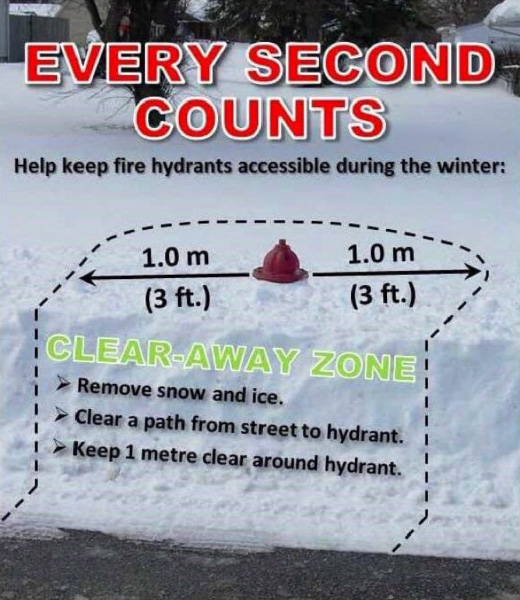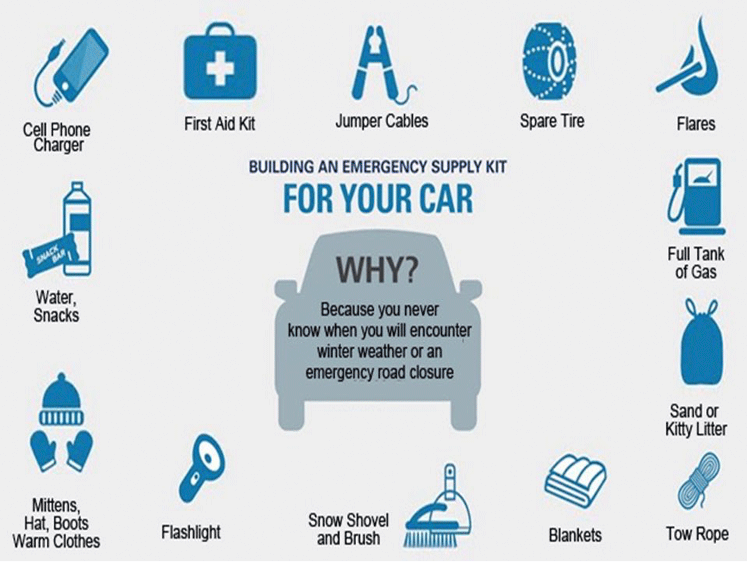Winter Storms & Driving
 You can prepare for potential hazards by having a plan in place to deal with the anticipated impacts of an event. Having your plan and emergency kit prepared in advance is the best way to support your family and pets. You may need to Shelter in Place or “hunker down” in your home for at least 72 hours (3 days) without needing to leave for supplies. Plan to be without power in many hazards that could occur.
You can prepare for potential hazards by having a plan in place to deal with the anticipated impacts of an event. Having your plan and emergency kit prepared in advance is the best way to support your family and pets. You may need to Shelter in Place or “hunker down” in your home for at least 72 hours (3 days) without needing to leave for supplies. Plan to be without power in many hazards that could occur.
Winter storms/blizzards are events that can affect all communities within Lunenburg County. Environment Canada tracks weather systems to mitigate their potential effects, but winter storms can strike with little notice and can potentially threaten life and property.
Emergency preparedness begins at home. When individuals and families are prepared, there’s less chance that they will need scarce community resources when an emergency occurs. For accurate updates check your local news and weather sources.
The impacts of a severe winter storm include:
- Unsafe travel conditions
- Widespread utility (power; phone; internet) disruptions
- School and business closures or early dismissals
Prepare for the impacts:
- To prepare for a winter storm consider listening to weather updates (local radio, T.V., Environment Canada updates.
- Consider your travel requirements during the predicted storm period and revise plans if necessary (i.e. plan to travel ahead of the storm to arrive safely, or delay travel until after the event)
- Make sure you are aware of the travel plans of other family members. If you do have to travel, make sure you pre-arranged check-in plans to ensure someone will be aware if you don’t arrive at your destination. Ensure you have an emergency kit available in your vehicle to deal with the possibility of being stranded on the road for an extended period of time.
- Consider how you could cope with being home (shelter in place) for 3 days or more, possibly without power, and ensure you have appropriate supplies. These supplies might include:
- Food supplies (ready to eat without cooking) for people and pets
- Drinking water
- Medicines and essential supplies
- Safe alternative heating sources or fuel
- Flashlights, batteries
- Battery operated radio
- Telephone that doesn’t require power to be functional (non-portable phone) o Family entertainment (games, books, puzzles)
- Check on family members and neighbours prior to the event, particularly if they rely on you or you on them, for assistance.
- Charge all battery-operated devices such as cell phones, laptops, and radios.
Talk about your plan
- Emergency plans should be shared.
- Talk to all your family members about what you plan to do, what you might need help with, and how they can help.
- Make sure everyone knows where your emergency supplies are.
- Talk to neighbours and relatives and your contacts to ensure they would be able to provide what you are counting on them for!
During the storm: Once a storm begins, put your emergency plan into action by:
- Staying off the roads until it is safe to travel.
- Listen to radio updates from emergency officials
- Check on neighbours and relatives within walking distance or by phone
- Notify your electric utility provider if you lose power
- Practice safety measures if using candles, alternative heat sources, and generators. Make sure you have good ventilation and don’t leave devices with open flames unattended.
- Being prepared means you don’t have to be scared. Once you know how you and your family could cope and you have the supplies you need, relax in the knowledge that you have done what you can. Settle in to enjoy the storm.
- If the power goes out while you are cooking be sure to turn off the stove and clear the burners and oven to prevent a fire when power is restored.
- If your door opens out, go out every hour during the storm to clear the entrance.
After the Storm
- Make a path between your front door and the road in case emergency responders need to get you.
- Check on your neighbours, especially seniors, persons with disabilities and single parents.
- Dig our fire hydrants, oil tanks, hot water exhausts, furnace and dryer vents, and secondary entrances.
- If you need a space heater, select a kind that shuts off if it tips over. Keep it 3 feet away from other objects. Turn off at night.
- Make sure your downspouts and outdoor drains are free of ice and snow.
- Hang darker clothing or blanket in your window to draw the heat from the sun to assist in warming your home.
Winter driving can be serious business. Plan ahead and be prepared. Winter weather conditions present challenges to your vehicle and to your safety.

Clear-away Zone
- Remove snow and ice
- Clear a path from the street to hydrant
- Keep 1 metre clear around the hydrant
The following items should be kept in your vehicle throughout the winter:
- Shovel
- Sand, salt or kitty litter
- Traction mats
- Tow bar or chain
- Compass
- Cloth or roll of paper towels
- Warning light or road flares
- Flashlight
- First-aid kit
- Extra clothing and footwear
- Blankets ("survival" blankets are compact and work well)
- Emergency food pack
- Axe or hatchet
- Booster cables
- Ice scraper and brush
- Road maps
- Matches and a "survival" candle in a deep can
- Fire extinguisher
- Methyl hydrate (for fuel line and windshield de-icing)

Building an Emergency Supply Kit for Your Car
WHY?
Because you never know when you will encounter winter weather or an emergency road closure
- Always heed the warnings of the local weather offices of Environment Canada. If you must drive in bad weather, make sure that you have plenty of fuel and let someone know your route and intended arrival time.
- If severe winter traps you in your vehicle, remember these tips:
- Pull off the road, turn hazard lights on, and hang a distress flag from the radio aerial or window. Remain in your vehicle, rescuers are most likely to find you there.
- Conserve fuel. Run the engine and heater for about 10 minutes each hour to keep warm, cracking a downwind window slightly to prevent carbon monoxide poisoning. Exercise to maintain body heat but don't overexert. Huddle with other passengers and use your coat for a blanket.
- In extreme cold, use road maps, seat covers, floor mats, newspapers or extra clothing for covering--anything to provide additional insulation and warmth.
- Turn on the inside dome light so rescue teams can see you at night, but be careful not to run down the battery.
- In remote areas, after the storm has passed, spread a large cloth over the snow to attract the attention of rescue planes.
- Do not set out on foot unless you can see a building close by where you know you can take shelter.
- Once the severe weather has passed, you may need to leave the car and proceed on foot. Follow the road if possible. If you need to walk across open country, use distant points as landmarks to help maintain your sense of direction.
Other Resources
Source: Get Prepared



